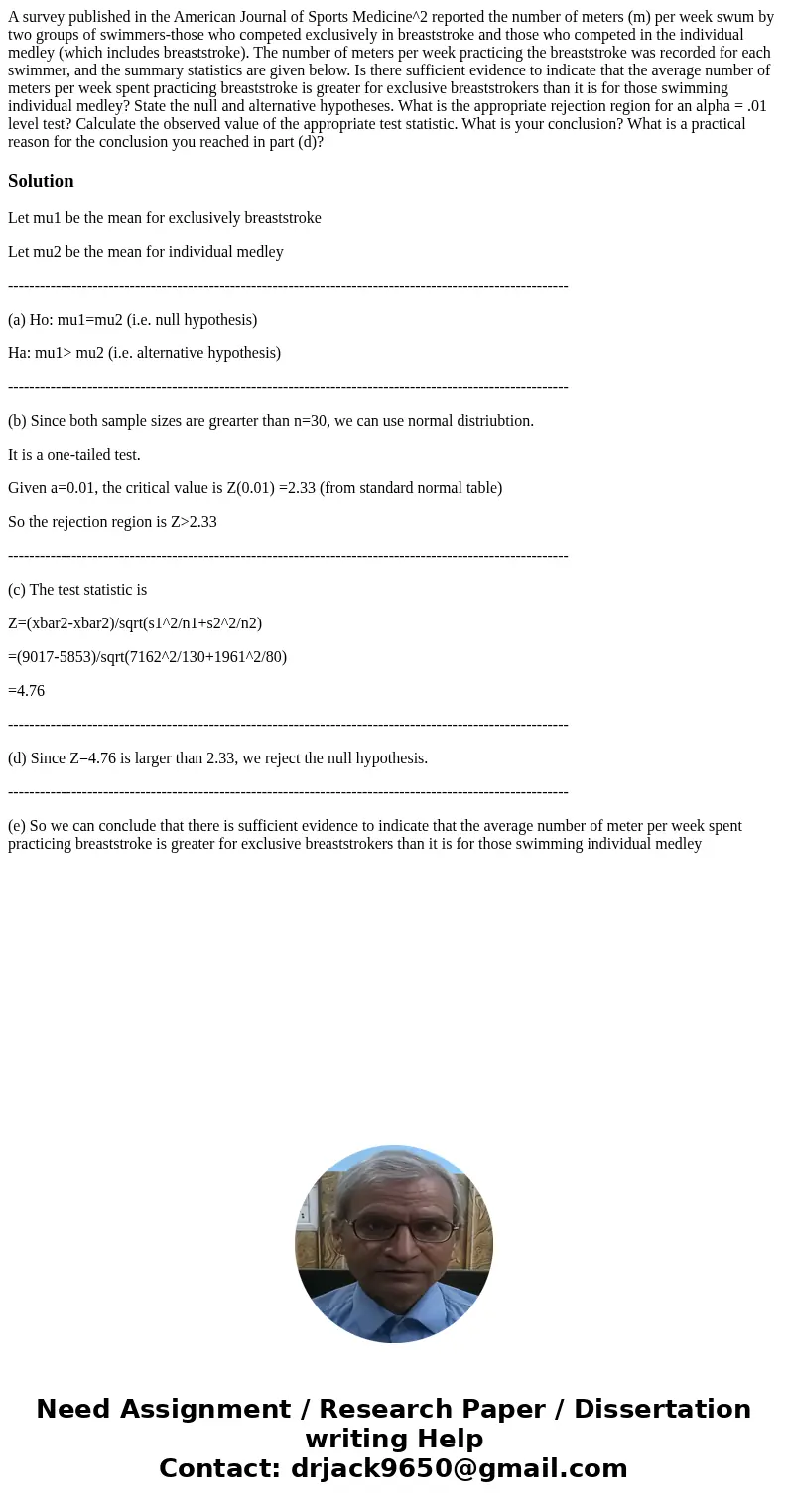A survey published in the American Journal of Sports Medicin
Solution
Let mu1 be the mean for exclusively breaststroke
Let mu2 be the mean for individual medley
----------------------------------------------------------------------------------------------------------
(a) Ho: mu1=mu2 (i.e. null hypothesis)
Ha: mu1> mu2 (i.e. alternative hypothesis)
----------------------------------------------------------------------------------------------------------
(b) Since both sample sizes are grearter than n=30, we can use normal distriubtion.
It is a one-tailed test.
Given a=0.01, the critical value is Z(0.01) =2.33 (from standard normal table)
So the rejection region is Z>2.33
----------------------------------------------------------------------------------------------------------
(c) The test statistic is
Z=(xbar2-xbar2)/sqrt(s1^2/n1+s2^2/n2)
=(9017-5853)/sqrt(7162^2/130+1961^2/80)
=4.76
----------------------------------------------------------------------------------------------------------
(d) Since Z=4.76 is larger than 2.33, we reject the null hypothesis.
----------------------------------------------------------------------------------------------------------
(e) So we can conclude that there is sufficient evidence to indicate that the average number of meter per week spent practicing breaststroke is greater for exclusive breaststrokers than it is for those swimming individual medley

 Homework Sourse
Homework Sourse